
- Subject:
- Biology
- Life Science
- Material Type:
- Unit of Study
- Provider:
- Ohio Open Ed Collaborative


Animal reproduction is necessary for the survival of a species. In the animal kingdom, there are innumerable ways that species reproduce. Asexual reproduction produces genetically identical organisms (clones), whereas in sexual reproduction, the genetic material of two individuals combines to produce offspring that are genetically different from their parents. During sexual reproduction the male gamete (sperm) may be placed inside the female’s body for internal fertilization, or the sperm and eggs may be released into the environment for external fertilization.

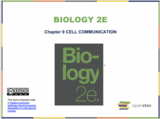
As with people, it is vital for individual cells to be able to interact with their environment. In order to properly respond to external stimuli, cells have developed complex mechanisms of communication that can receive a message, transfer the information across the plasma membrane, and then produce changes within the cell in response to the message. In multicellular organisms, cells send and receive chemical messages constantly to coordinate the actions of distant organs, tissues, and cells. The ability to send messages quickly and efficiently enables cells to coordinate and fine-tune their functions.


Cell reproduction is a process of cell division that divides one cell into two identical cells. In multicellular organisms cell reproduction can be for growth, development or repair, whereas in single cell organisms it is a mechanism of reproduction. The focus of this content is the cell cycle in eukaryotic cells, regulation of the cell cycle, and consequences of a lack of regulation in the context of cancer. A summary of binary fission in prokaryotic cells is also included.

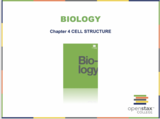
Your body has many kinds of cells, each specialized for a specific purpose. Just as we use a variety of materials to build a home, the human body is constructed from many cell types. For example, epithelial cells protect the body's surface and cover the organs and body cavities within. Bone cells help to support and protect the body. Immune system cells fight invading bacteria. Additionally, blood and blood cells carry nutrients and oxygen throughout the body while removing carbon dioxide. Each of these cell types plays a vital role during the body's growth, development, and day-to-day maintenance. In spite of their enormous variety, however, cells from all organisms—even ones as diverse as bacteria, onion, and human—share certain fundamental characteristics.

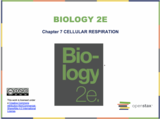
Plants and animals must take in and transform energy for use by cells. Plants, through photosynthesis, absorb light energy and form organic molecules such as glucose. Glucose has potential energy in the form of chemical energy stored in its bonds. This chapter covers the metabolic pathways of cellular respiration and describes the chemical reactions that use energy in glucose and other organic molecules to form adenosine triphosphate (ATP). ATP is the cell’s “energy currency” fueling virtually all energy requiring processes. The chemical reactions of cellular respiration are a series of oxidation- reduction (redox) reactions that are divided into three stages: glycolysis, the citric acid cycle and oxidative phosphorylation.

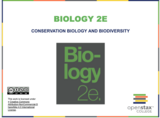
The core threats to biodiversity are human population growth and unsustainable resource use. Current significant threats to biodiversity include habitat loss, overharvesting/overexploitation, invasive species, and climate change. Conservation biology works to counteract the loss of biodiversity due to these threats. These methods include legislative framework such as the ESA and MBA, setting aside preserves, habitat restoration, and captive breeding programs.


Ecology is the study of the interactions of living organisms with their environment. One core goal of ecology is to understand the distribution and abundance of living things in the physical environment. Attainment of this goal requires the integration of scientific disciplines inside and outside of biology, such as mathematics, statistics, biochemistry, molecular biology, physiology, evolution, biodiversity, geology, and climatology.

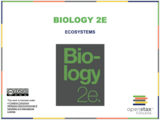
An ecosystem in biology is the first level of organization that includes biotic and abiotic (non-living) components. Ecosystem types vary widely, and ecologists study their structure and dynamics through field work and computer-based modeling. Understanding how energy flows through and materials are cycled within ecosystems.


The theory of evolution is the unifying theory of biology, meaning it is the framework within which biologists ask questions about the living world. Its power is that it provides direction for predictions about living things that are borne out in ongoing experiments. The Ukrainian-born American geneticist Theodosius Dobzhansky famously wrote that “nothing makes sense in biology except in the light of evolution.” He meant that the tenet that all life has evolved and diversified from a common ancestor is the foundation from which we approach all questions in biology.


Animal evolution began in the ocean over 600 million years ago with tiny creatures that probably do not resemble any living organism today. Since then, animals have evolved into a highly diverse kingdom. But what is an animal? While we can easily identify dogs, birds, fish, spiders, and worms as animals, other organisms, such as corals and sponges, are not as easy to classify. Animals vary in complexity—from sea sponges to crickets to chimpanzees—and scientists are faced with the difficult task of classifying them within a unified system. They must identify traits that are common to all animals as well as traits that can be used to distinguish among related groups of animals. The animal classification system characterizes animals based on their anatomy, morphology, evolutionary history, features of embryological development, and genetic makeup. This classification scheme is constantly developing as new information about species arises. Understanding and classifying the great variety of living species help us better understand how to conserve the diversity of life on earth.